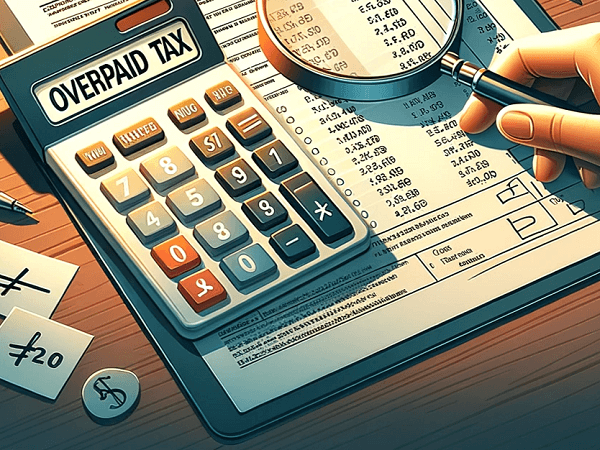Calculating overpaid tax can be a complex process, especially considering the different corporate configurations that businesses can have. However, by following a few simple steps, you can determine if you have overpaid your taxes and take the necessary steps to claim a refund. This article will provide a step-by-step guide on how to calculate overpaid tax based on your business structure.
Calculate Overpaid Tax
The first step in calculating overpaid tax is to gather all your expense and income receipts. Create a ledger with two sections – one for your expenses and another for your income. Include all relevant documentation such as receipts, advertising expenses, employment benefit plans, and other costs related to operating your business. In the income section, include your gross receipts or sales.
Order the Appropriate Tax Forms
The next step is to order the necessary tax forms based on your business structure. If you are a sole proprietor, you will need to print Form 1040 and Schedule C. For partnerships, Form 1065 is required, and for S corporations, Form 1120S is needed. If you are filing as an LLC, you will need to choose from among these categories since LLCs are not recognized as classifications for tax-filing purposes.
Enter Income and Expenses
Once you have the appropriate tax forms, enter your income in the first section of the form and your expenses in the second section. If you are using Form 1120S, also enter any quarterly estimated tax payments in the third section, line 23a. If you are using IRS form Schedule C, enter your estimated tax payments on Form 1040, line 62. To calculate your estimated tax, use Form 1120W for corporations or Form 1040-ES for other designations.
Compare Total Payments and Total Tax
After entering all the necessary information, use your respective tax form to add up your total payments and compare them with your total tax. If your total payments exceed your total tax (minus any deductions, credits, or exemptions), you have overpaid your taxes, and the IRS will refund the excess amount to you.
Overpaid Back Tax
In the case of overpaid tax from previous years, it is essential to review your back tax returns for any missed deductions, credits, or expenses. If you find that you have overpaid, complete an amended return using Form 1040X. Make sure to file the amended return within three years of the statute of limitations to be eligible for a refund on the unpaid tax. Keep in mind that it may take 8 to 12 weeks for the IRS to process your amended return.
By following these step-by-step instructions, you can accurately calculate your overpaid tax and take the necessary steps to claim a refund. Remember to keep all relevant documentation and file the appropriate forms based on your business structure. Calculating overpaid tax can be a complex process, but with the right guidance, you can ensure that you receive the refund you are entitled to.


